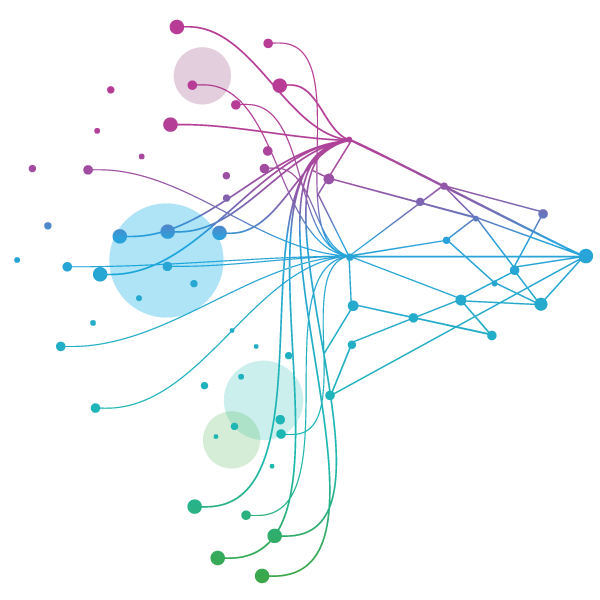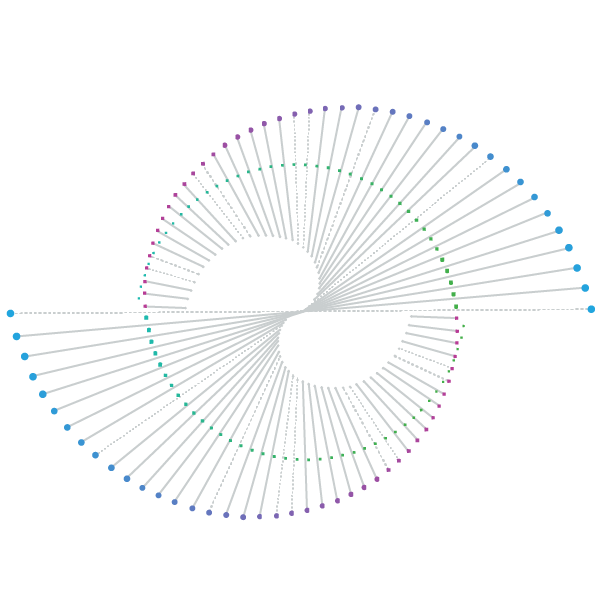IQVIA Analytics Link Ecosystem establishes deep connections across our key data assets.






















- Blogs
- Delving Into Oncology Drug-Treated Patient Trends
Whilst we typically view the pharmaceutical industry through medicine sales and volume, patient-centred metrics are ultimately crucial for a fully comprehensive understanding of the market, including that of Oncology. IQVIA's new MIDAS Patient data estimates the number of patients taking medicines and can be segmented by cancer type, providing further granularity into Oncology dynamics. As cancer care becomes more personalised and multi-indicational, patient-level insights will be increasingly paramount to gain a comprehensive insight into the complexity of the oncology landscape.
Following our previous blog on disease area insights1, this blog investigates key trends and drivers in the number of oncology patients treated with prescription medicines across cancer types, using MIDAS Patient.

Together, breast cancer and prostate cancer represent 63% of all cancer-treated patients, as seen in Figure 1. This is largely due to these cancer types having high incidence rates, with breast cancer being the leading cancer for women, and prostate cancer second for men2. Additionally, these cancers are associated with widespread routine screening programmes and established treatment pathways, increasing the number of patients diagnosed and subsequently treated. As seen in the figure, these cancers are also among the lowest in terms of mortality rates. Consequently, with longer survival, a greater number of patients require chronic treatment, culminating in a higher overall number of treated patients.
Among the deadliest cancers are lung and colorectal cancers, with the combination of relatively high incidence and high mortality meaning they account for the highest absolute number of deaths3. The number of patients treated for lung cancer has grown relatively fast in the last five years, likely driven by therapeutic innovation for non-small cell lung cancer (NSCLC), the leading lung cancer subtype.
Many of the less common cancers have high mortality rates, indicating high unmet need. Of these, liver cancer had particularly fast growth in the number of treated patients, with a CAGR of 14% (2019-2024). This growth can partly be attributed to a rising number of new liver cancer cases and deaths, (which are predicted to increase by over 55% by 2040), and efforts to improve earlier liver cancer diagnosis4.
Another notable area of growth is haematological cancers, where drug-treated patient numbers grew with a 5-year CAGR of 8% compared to just 4% for solid cancers. This growth is likely driven by advances in targeted immunotherapies over the last 5 years, such as CAR-T cell therapy, antibody-drug conjugates, and bispecific antibodies5. These innovative next-generation biologics have effectively expanded the drug-treatable patient population for haematological cancers such as leukaemia and multiple myeloma.
These insights illustrate how estimated treated patient numbers can uncover key developments in medicines access, earlier diagnosis, and medical innovation.
For a deeper dive into these topics and beyond, watch our webinar on-demand now. Explore global market dynamics, treated patient trends in Oncology, Immunology, and Obesity, along with global health insights focusing on antibiotic use and resistance.
1 Revealing Pharma Trends Through Drug-Treated Patient Insights - IQVIA
2 Global Cancer Statistics 2022: GLOBOCAN estimates of incidence and mortality
3 World Health Organisation – Cancer Fact Sheet
4 International Agency for Research on Cancer - Press Release
5 Breaking New Ground: Advancing Cancer Care with Novel Therapeutic Modalities - IQVIA

Analyze market performance from sales to disease and patient
IQVIA MIDAS® has long been considered the industry benchmark for global market measurement, integrating the breadth and depth of IQVIA's unparalleled data assets with advanced analytics and deep domain expertise across 95 countries.
Just launched, MIDAS Patient adds patient insights across 600 diseases at scale to evolve with industry transformation towards multi-indication drugs and ensuring patient-centricity at the forefront. Life sciences organizations can now easily make disease comparisons supported by patient metrics across the MIDAS universe.
Thought Leadership
IQVIA MIDAS® Patient
Evolution of Patient-Centricity in the Multi-Indication Pharmaceutical Era
MIDAS Early Bird: Sales trends of 2023 and implications for the future
Related solutions
Measure the performance of your sales force and marketing channels, adapt your commercial strategy and gain real world competitive insights.





